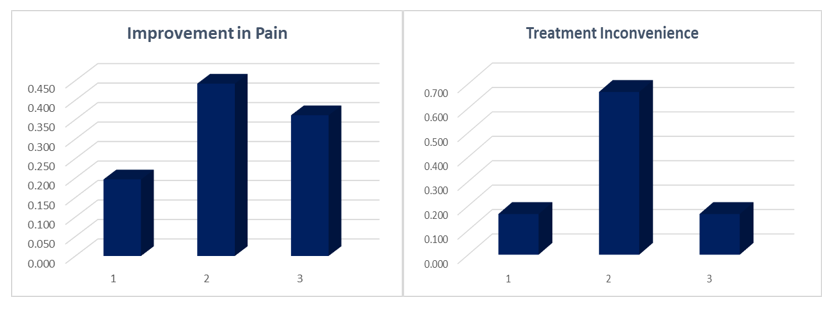Clinical decision support models that we develop in this project predict the outcome of available treatment options depending on the characteristics of a patient using Bayesian Network (BN) models. However, this outcome is multidimensional; there are several factors related to how a treatment will affect a patient. These factors can be related to functional or psychosocial improvement, side effects, discomfort caused by treatment, reduction in pain and fatigue, cost, time, etc. To reach the final treatment decision for each patient in such a setting, specialized methods that can deal with multiple criteria are required.
In multiple criteria decision making (MCDM) problems, criteria generally conflict with each other. There is no decision alternative that has the best evaluation in all criteria. For example, a treatment with quick effects on pain is likely to have significant side effects. Moreover, different decision makers (DMs) may have different priorities among the criteria involved. Some patients may need major improvements in function whereas others need improved psychosocial status as the first priority. MCDM methods are required to deal with the conflicting nature of different criteria, and also different preference structures of different DMs. We aim to integrate MCDM techniques with BNs to provide decision support under uncertainty with multiple criteria.
We use plantar fasciitis as a case study to develop and demonstrate the use of BNs for MCDM problems. Plantar fasciitis is a relatively common musculo-skeletal condition causing foot pain. Different feasible treatment alternatives are available for this condition including surgery, electro-shockwave therapy, orthoses and exercise. The outcomes of these treatment alternatives involve uncertainty; therefore, BN models are suitable for developing predictive decision support tools in this domain. There are also multiple criteria involved, including improvement in pain, cost of treatment and treatment inconvenience. The predictions of BN models are probability distributions as shown below. It may be difficult for patients and clinicians to interpret these probability distributions, and it is not straightforward to consistently reflect patient preferences on them to select the best decision alternative for a patient. We use MCDM approaches with the posterior probability distributions provided by BNs to provide ranking of treatment alternatives based on patient preferences rather than raw probability distributions.